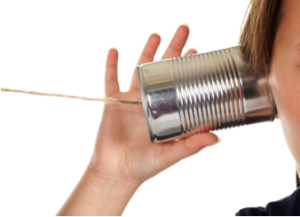“Treat others how you want to be treated.” We are all too familiar with this rule; we’ve heard it from our parents, our teachers, and our peers. But as time goes on, we have realized just how relevant that quote continues to be. Take our industry for example: an ageny’s success in the public relations and marketing world is dependent on your treatment of your clients. More often than not, you are exposed to a variety of different client personalities and with so many varying types of relationships, the agency team must know how to navigate partnerships in a positive, mutually beneficial way. Here are a few tips of the trade for successfully managing a client/agency relationship:
Since you don’t share an office space, the relationship between client and agency cannot be sustained without consistent communication. Both parties must be active listeners and inform other on all related news, even if it doesn’t always seem relevant to the other party right away.
 Expectations are managed and trust is mutual
Expectations are managed and trust is mutual
Have expected roles, responsibilities, and KPIs (key performance indicators) explicitly laid out from the get-go. If both parties can set realistic expectations for each other, then the collaboration will be significantly more cohesive and enjoyable.
Reliability is key to keeping everyone in this relationship happy. If you want your clients to love you, you need to follow through with promises Even small tasks can pile up over time and add serious frustration to the relationship. Make a to-do list, set calendar reminders – whatever it takes to make your deadline!

Say “Thank You”
Something as simple as saying “thank you” can go a long way for both the agency and the client. Often, we forget how much work goes into those little tasks that don’t rank quite as high on the list of priorities. But at the end of the day, it’s one of those human responses that are mutually appreciated.
At CBC, we’ve been known to post client ‘Thank You Notes’ to the fridge in our kitchen so that the whole agency can see and appreciate the recognition.
What other tips do you have for nurturing a good client/agency relationship?
Integrating social media players into your next digital marketing campaign is a great way to share your brand beyond its standard audience. As the industry continues to evolve, brands are experiencing major pressure to amp up their traffic and engagement via social media hubs like Facebook, Instagram, and Twitter … and social influencers are definitely a key way to get your message out there.
Below are some ways you can successfully and effectively partner with an influencer to promote your brand:
Engage with their loyal community
No matter the hobby or interest – dogs, food, yoga, whatever – many people have that one social media personality that they religiously follow. These “social media celebrities” are special to us because they are relatable. When one of these “everyday celebrities” promotes a product on their social media pages, the follower trusts the loyalty already built.


Let the influencer speak with his/her own voice
Social media is all about simplicity with style. Every influencer has their own distinct voice that resonates with their followers. Brands should not try to control the blogger’s writing style, but instead leverage that voice. Create a relationship where the influencer is more than happy to promote the product because it flows with their style.
Below is an example of the blog Broma Bakery’s Instagram. The featured Stonewall Kitchen image received great reviews!

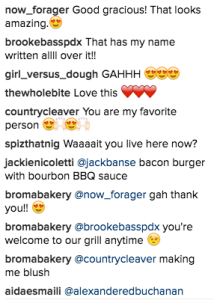
Engage with the influencer’s most successful social channel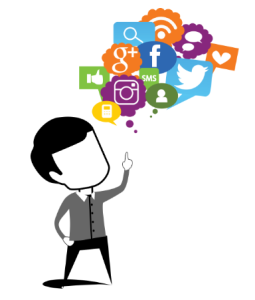
According to We Are Social Media, Instagram is one of the most powerful social-marketing platforms for consumer brands. Instagram has been recognized for driving
more sales and consumer actions than any other social media platform. When selecting a partner, notice their strongest social channel and decide if it’s a good fit for your campaign. If photography is your objective, Instagram is a strong choice. If you want to drive website traffic perhaps find a social influencer who works primarily with Facebook.
Pick an influencer who matches your vibe
Most social celebs have a specific style or personality behind their posts – use this to your advantage when you pick a partner. Finding a blogger that matches your brand’s niche will give you a better chance at reaching potential consumers.

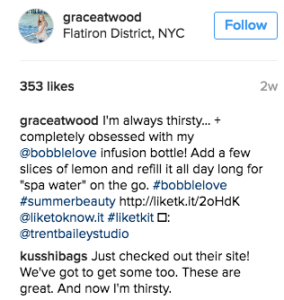
Take these reasons into consideration when deciding which social influencers you should partner with to get all eyes on you.
It’s the marketer’s responsibility to come up with creative ways to stand out against the competition. And as we all know, the online community is not a particularly forgiving group – so controversial comments intended to be funny rarely fly. These careless and inadvertent mistakes can often cost the company, literally and figuratively.
Below are examples of when the creativity just plain flopped:
Bud Light really is #UpForWhatever
In 2015, these new slogans appeared on our Bud Light bottles: “The perfect beer for removing ‘no’ from your vocabulary for the night. The perfect beer for whatever happens. #UpForWhatever.” As you can imagine, the audience did not react well.
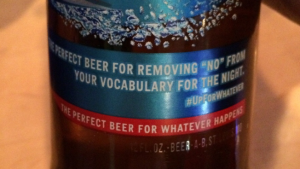
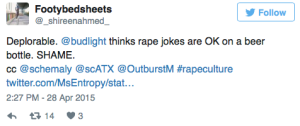
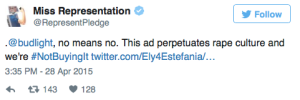
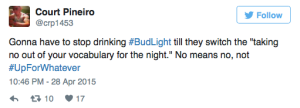
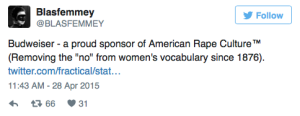
Total Beauty Twitter Mix-up
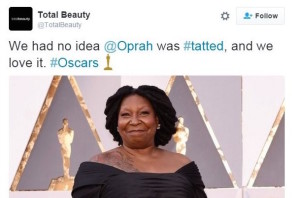
Valiant effort to compliment Oprah, except … well… that’s not Oprah. Awkward!
Oprah and Whoopi Goldberg tried to help lessen the media heat on Total Beauty, but a mistake that obvious certainly does not go unnoticed. Whoopi told ET she “could be compared to a lot worse people.” It was more unfortunate that this particular award ceremony was already being criticized for being “too white” and “not diverse”.
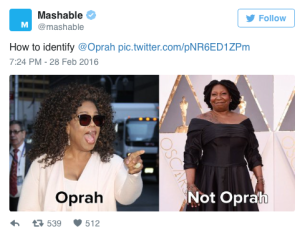
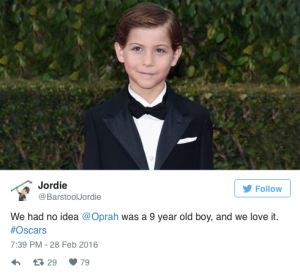
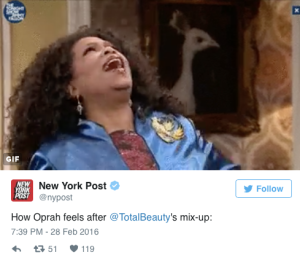
Bic: Maybe just think like a professional
“Look like a girl, Act like a lady, Think like a man, Work like a boss”. Okay, It doesn’t take a lot of explaining to understand why this advertisement was offensive to just about all women on National Woman’s Day. The company did eventually apologize.
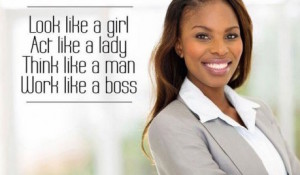

Dave and Busters’ Taco Tweet Disaster
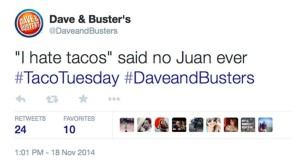
This tweet was obviously supposed to be funny and promotional but somewhere went horribly wrong. It took Dave and Busters less than an hour to realize that the public reaction was not what they hoped and the company quickly apologized for the comment.

Promoting your brand may not always be smooth sailing, but the way you handle these situations determines the overall impact on an organization. Many companies are proactively forming diversity or inclusion committees in order to get ahead of potential PR flubs. However if you find yourself in hot water, get a full assessment of the situation, work quickly, and instill confidence in the company in order to solve the problem.
Despite all of the advances in psychology and medicine, the human mind is still a giant mystery. For some people, certain words, colors, or pictures can evoke very unique responses, while others produce no reaction at all. With the fields of psychology and neuroscience continuing to expand and explore the brain, we as marketing professionals can benefit from even a simple glimpse at how these processes can be advantageous in our branding. An expert in the world of marketing or advertising knows that the smallest detail can make or break a company’s success, from the hue of color in the logo to the word choice in a slogan.
 One of the fastest growing subjects in psychology is the study of consumer behavior. Psychologists are fascinated by why certain products or services sell so well in comparison to others and how long the period of sale time lasts. Their conclusion? When in the role of a consumer, the person is not a rational being. Instead, they are overcome with both conscious and unconscious thoughts and emotions. A strong marketing professional will use all of these different neurological reactions to their advantage as a way to create the best platform possible on behalf of their client.
One of the fastest growing subjects in psychology is the study of consumer behavior. Psychologists are fascinated by why certain products or services sell so well in comparison to others and how long the period of sale time lasts. Their conclusion? When in the role of a consumer, the person is not a rational being. Instead, they are overcome with both conscious and unconscious thoughts and emotions. A strong marketing professional will use all of these different neurological reactions to their advantage as a way to create the best platform possible on behalf of their client.
If you want to sell a product, you have to know how people will react to the moving parts of it. A good start would be to hone your interpersonal skills for when you build new relationships with existing or prospective clients.

When speaking to an audience, word choice is critical to capturing their attention. Because our unconscious mind interprets things very literally, metaphors and similes can be amazing marketing tools. When you describe something as sweet, it will activate two primary centers in your brain: the amygdala (which covers basic emotions) and the taste center to quickly create the same excitement you would feel if someone had just presented you with something sweet to eat.
Another aspect of consumer behavior to think about in marketing is color – studies show that different colors elicit different emotions. So choosing the right color palette is necessary to elicit the appropriate reactions and emotions from consumers when they look at your advertisements or logos. For example, red is a powerful color. It can evoke a spectrum of feelings, from excitement to anger. It also has been shown to trigger hunger, which explains why so many food chain logos contain the color.

Even though the color red elicits hunger, it tends to get over-used. For this reason, some companies decide to use a color that makes them stand out, even though it doesn’t necessarily produce the most instinctual response. A strong example of this is Starbucks, which is the only major global brand to showcase green in its logo. While most people associate the word “coffee” with being alert and energized, Starbucks brings an element tranquility to its café settings.

It’s important to remember that too many colors will over-stimulate your consumer, resulting in confusion rather than a positive association. It’s better to keep your message clean and simple. This applies to word choice as well. It is to your advantage as a marketing professional to take the principles of psychology and apply them to your business strategy. It’s basically a marketing cheat-sheet, so why wouldn’t you want to use it?

